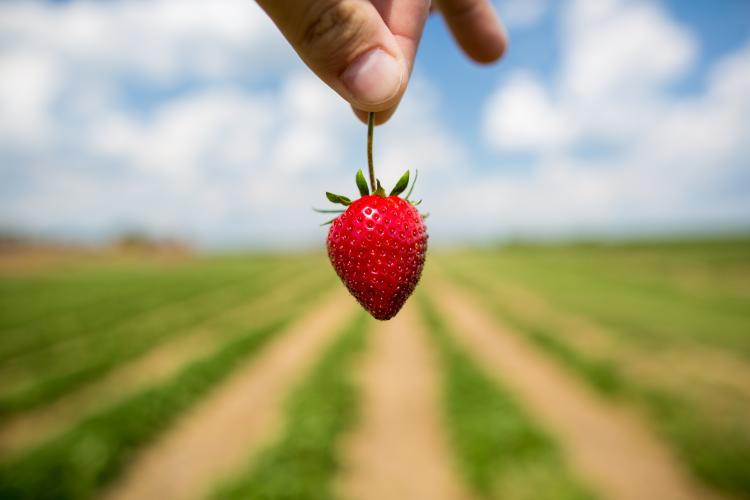
CaTs Benefits in Strawberry Production

Why Calcium Can’t Be Ignored
Calcium is probably not the first nutrient that comes to mind for strawberry growers -- that spot is usually reserved for nitrogen, potassium or phosphorous. Calcium is, however, a nutrient that can’t be ignored. It plays a vital role in many essential plant metabolic functions, each of which lead to a stronger healthier plant, including:
- stimulating root and leaf development
- activating important plant enzyme systems
- forming compounds that are part of cell walls, thereby strengthening plant structure
Calcium’s Role in Strawberries
A key consideration for strawberry growers is the role calcium plays in producing firmer berries, leading to increased storage potential and shelf life. It’s also important to remember the indirect impact that calcium can have in enhancing plant quality by improving soil physical properties. Calcium promotes soil aggregation, leading to larger soil pore sizes. This helps to improve water infiltration and oxygen flow into and throughout the soil; one essential component in creating healthy soils.
CaTs® is an Excellent Source of Calcium
To ensure proper calcium nutrition, strawberry growers should look closely at the source of calcium fertilizer and the timing of that fertilizer application. The basic guiding principal is to make calcium available to the plant by applying it where it needs to be and when it needs to be there.
CaTs (10% sulfur, 6% calcium) from Crop Vitality is an excellent source of calcium for strawberry production. The liquid formulation allows for easy and convenient applications through irrigation systems. CaTs can be applied throughout the growing season, targeting key growth stages like bloom and early berry formation. CaTs can also be applied with nitrogen fertilizers (including UAN, Urea solutions, AN-20) to add both calcium and sulfur along with essential nitrogen.
The highly soluble calcium in CaTs ensures that the calcium is available when the plant needs it. The table below shows the solubility of common calcium fertilizers. Gypsum, for example, has a solubility of 2.41 g/L compared to 282 g/L for CaTs. When comparing the amount of calcium that is soluble per liter, CaTs is 132 times more soluble than gypsum. That’s important because while gypsum can be a good source of background calcium, it’s not possible for the grower to control when the calcium becomes available to the growing strawberry plant. By injecting CaTs into an irrigation system, the water carries the soluble calcium to the rootzone, which is precisely where the crop needs it.
Written by Dan Cook, Crop Vitality, Tessenderlo Kerley Agronomist
